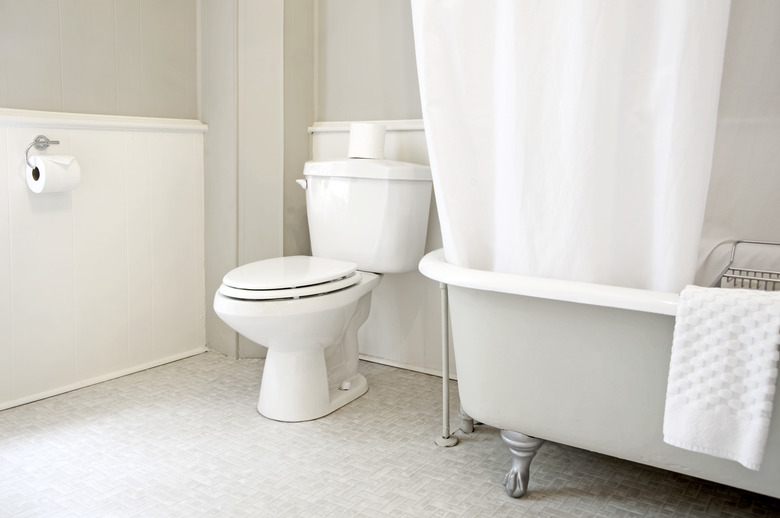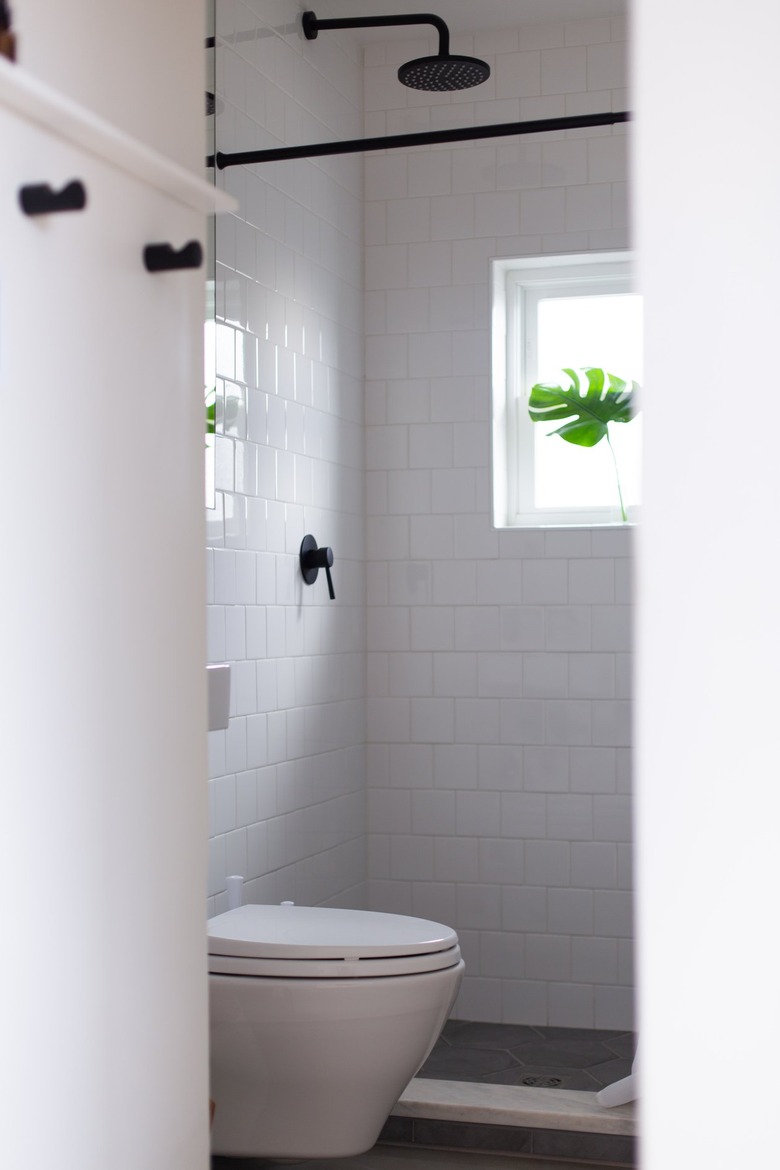How To Adjust A Toilet Fill Valve
The toilet fill valve is one of two mechanisms inside a toilet tank, the other being the flush valve, which is the one you activate when you flush the toilet. After the flush completes, the fill valve swings into action to refill the tank. It's connected directly to the water supply and works essentially like a faucet, but it needs a mechanism to turn it on and shut it off automatically, or you would have to do that manually every time you flush. This mechanism is what distinguishes one fill valve from another, and it's what you need to adjust when the tank water level is too high or too low.
4 Types of Toilet Fill Valves
4 Types of Toilet Fill Valves
Although almost every professional plumber identifies four different types of fill valves, there are really only two: float valves and floatless ones. The float is a ball or cup that rides on the surface of the tank water and triggers the fill valve to shut off when the level reaches the proper height. A floatless toilet fill valve sits at the bottom of the tank sensing water pressure, and when the pressure reaches the cutoff point, it shuts off the valve. According to the Toilet Zone, floatless valves aren't as reliable as float valves.
Three different types of floats control fill valves in North American toilets:
- Plunger-style valves: Also known as ballcocks, these are among the oldest fill valves, featuring a plastic ball float on a metal armature controlling a plunger mechanism that controls water flow. All parts of the valve are made of metal, which is subject to corrosion and needs periodic lubrication.
- Diaphragm-style valves: Like plunger-style fill valves, these also feature a float ball on the end of a plastic or metal float arm, but instead of a plunger, the valve employs an elastic diaphragm to control water flow.
- Cup-style valves: Also known as Fluidmaster valves after the company that introduced them, these valves have a sealed cup that slides up and down on the fill tube. These all-plastic valves take up less space in the toilet and are easier to adjust and more reliable than ball valves. This is the type of valve most likely to be supplied with a new toilet.
How to Adjust a Ball-Style Fill Valve
How to Adjust a Ball-Style Fill Valve
One cause of a running toilet is a leaking toilet flapper that lets water seep into the toilet bowl, but another cause is that the fill level of the valve is set too high, allowing water to drain into the overflow tube. When the fill valve is properly adjusted, the water level should be about 1/2 to 1 inch below the overflow tube opening when the valve shuts off. If the fill valve assembly features a float ball, you can correct overfilling in one of two ways:
- Unscrew the ball counterclockwise a few turns to make the float arm longer. This increases the leverage of the float arm so it can put more force on the shutoff valve and turn the water off sooner. A variation of this method is to rotate the float arm so that the bend in the middle is facing up, which forces the ball deeper into the tank and also shuts off the water sooner. If the rod is metal and perfectly straight, you can unscrew it, bend it yourself and replace it.
- Adjust the sensitivity of the plunger or diaphragm by turning the adjustment screw with a screwdriver. Turning the screw clockwise increases the sensitivity and lowers the water level, while turning it clockwise has the opposite effect.
Note: If your toilet has a metal plunger-style valve and it squeals, fails to shut off or won't respond to adjustments, try lubricating it with penetrating oil or spray lubricant. If that has no effect, it's time for a new toilet fill valve, which is inexpensive and easy to install.
How to Adjust a Fluidmaster-Style Cup Fill Valve
How to Adjust a Fluidmaster-Style Cup Fill Valve
Note that the float cup on a Fluidmaster-style valve is connected to the valve assembly by a vertical plastic rod with a screw on top. Turn this screw counterclockwise to lengthen the rod and lower the water level, and turn it clockwise to shorten the rod and raise the water level. This is generally the only adjustment possible, but if you see a screw on the top of the valve body on top of the refill tube, you can use it to adjust the valve sensitivity by turning it clockwise to increase sensitivity or counterclockwise to decrease it.
Older Fluidmaster-style valves have a float that is connected to a thin metal rod with a small metal clip. To adjust the float height, squeeze the clip and slide the float up or down on the rod: up to raise the water level or down to lower the water level.
How to Adjust a Pressure-Sensitive Toilet Fill Valve
How to Adjust a Pressure-Sensitive Toilet Fill Valve
Locate the adjustment screw on the top of the valve, which will be sitting under the water in the bottom of the tank. Turn this screw clockwise with a screwdriver to increase the cutoff pressure setting, which will raise the water level in the tank. Turn the screw counterclockwise to lower the cutoff pressure and the tank water level.

